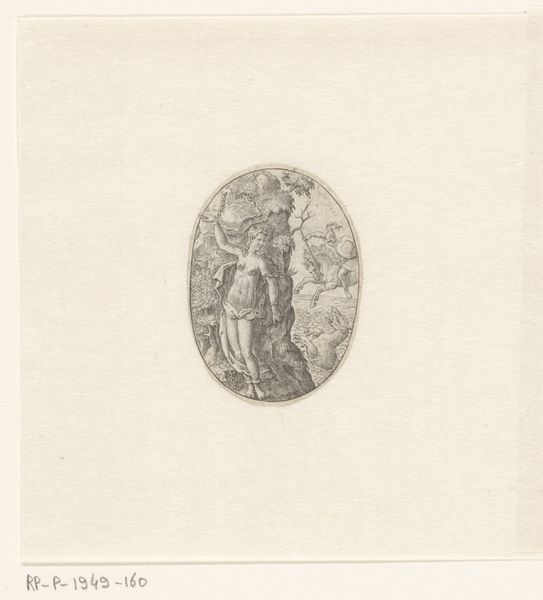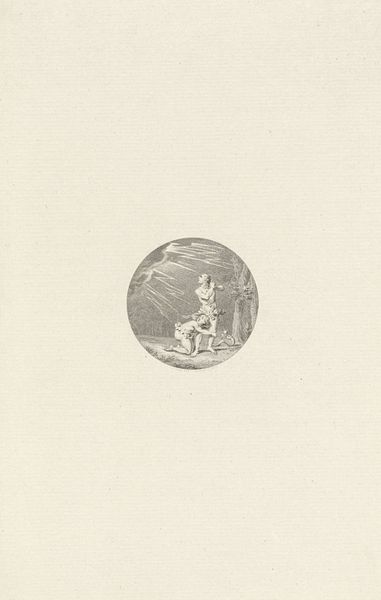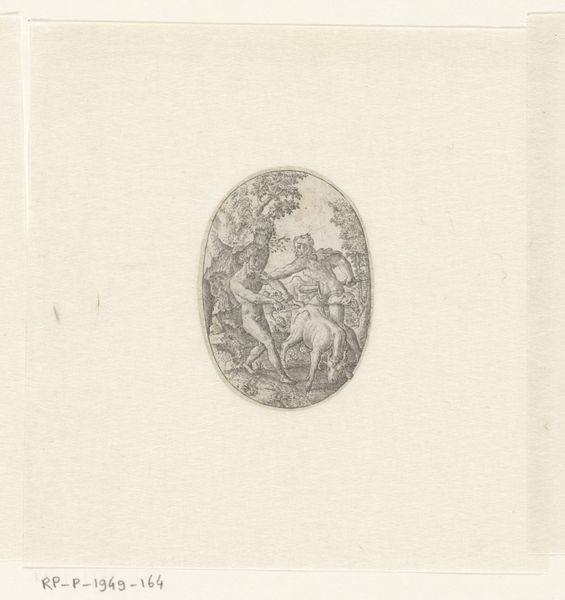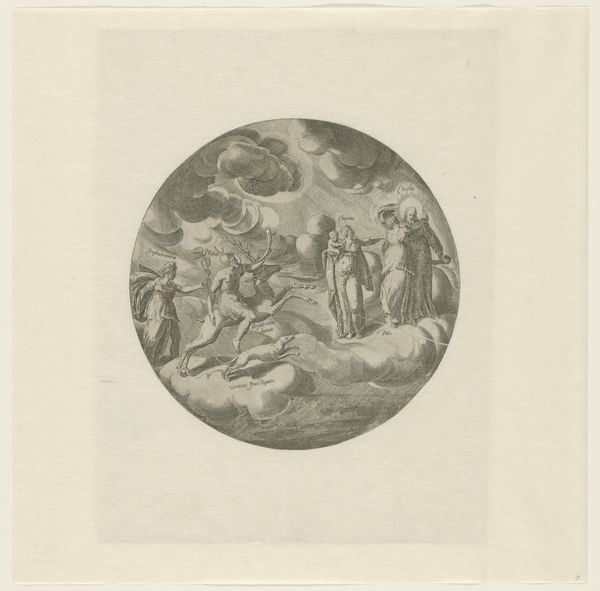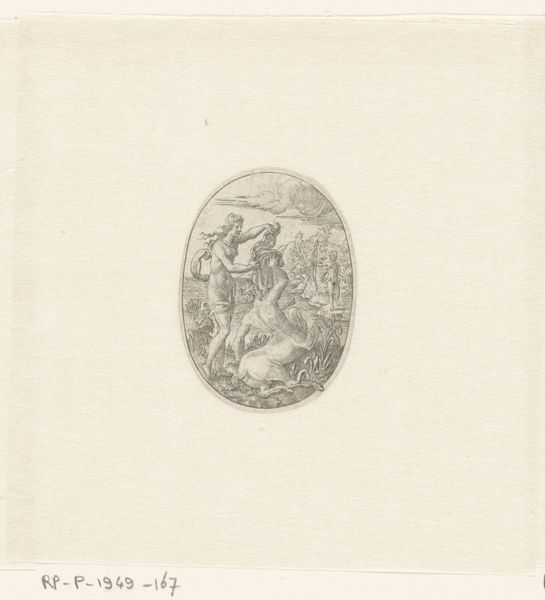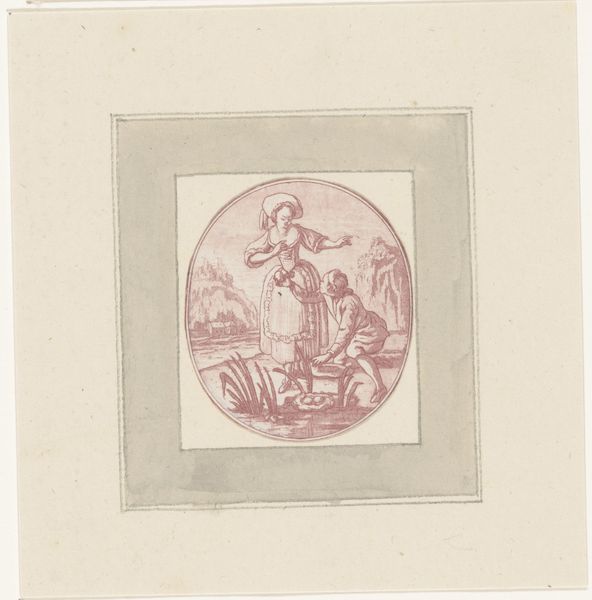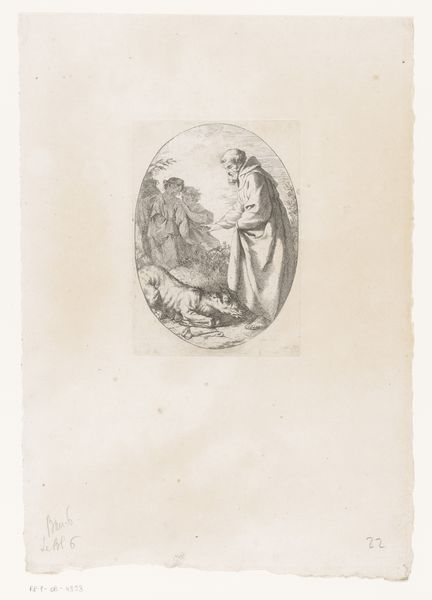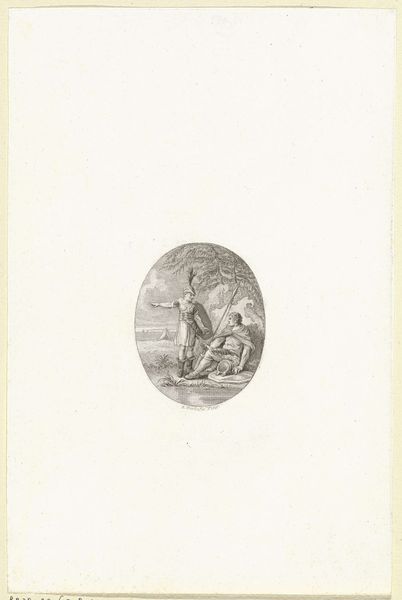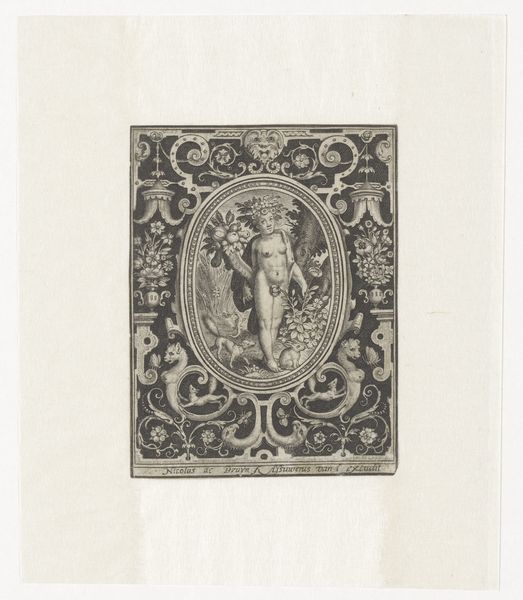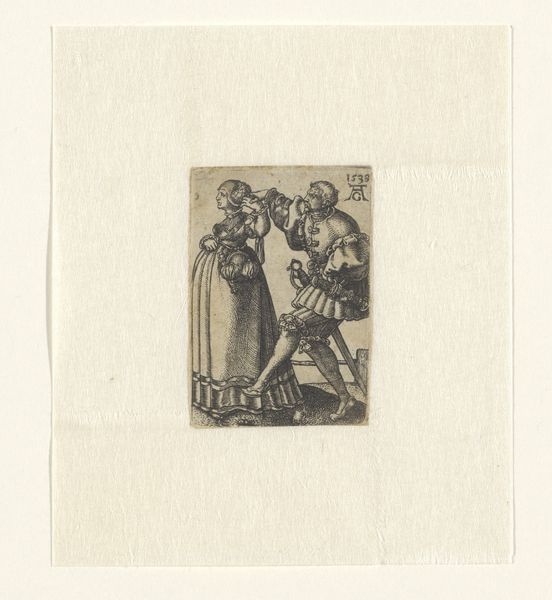
Two Shields Supported by a Wild Man c. 15th century
0:00
0:00
print, engraving
#
medieval
#
germany
# print
#
figuration
#
line
#
northern-renaissance
#
engraving
Dimensions: 3 × 3 1/16 in. (7.62 × 7.78 cm) (sheet, diameter)10 5/8 × 8 1/4 in. (26.99 × 20.96 cm) (mat)
Copyright: Public Domain
Editor: So this is Martin Schongauer's "Two Shields Supported by a Wild Man," an engraving from around the 15th century. It's fascinating how much detail he achieved. I'm really struck by the starkness of the lines. What stands out to you when you look at this engraving? Curator: Well, let’s consider the production itself. Engraving is an artisanal technique. This wasn't simply about Schongauer's creative vision, but also the labor and skill involved in transferring that vision onto a metal plate, a process then used for reproduction. Editor: That’s true, it’s not just one image, it can be endlessly multiplied. Curator: Exactly! How did the printing process change the understanding of images at that time? Also, this Wild Man figure...consider how this reflects ideas around social order. Think about the materials—the metal plate, the ink, the paper. How do these material components themselves shape meaning? What does the black and white mean for its viewers? Editor: So you're saying it's not just the image itself, but the very *act* of making it, and the context that surrounds it? I hadn't considered that. Curator: Precisely. Schongauer's engraving participates in a larger system of material exchange and social symbolism. By focusing on those systems, we begin to unpack layers beyond just aesthetics. Editor: I see! So understanding the material process gives us a different way of seeing the art? Curator: Absolutely. It helps to deconstruct the romanticized image of the solitary artist. We start to think about how cultural context influences its creation and reception, expanding its layers of understanding. Editor: This gives me a lot to consider. Thanks for providing this fascinating approach to understanding art. Curator: My pleasure. Considering how things are made provides a powerful key to unlocking new interpretations.
Comments
minneapolisinstituteofart almost 2 years ago
⋮
This furry fellow crowned with a wreath of vines is a wild man, a creature from just beyond the fringes of civilization. He holds two shields like the symbols that families used to mark their property and their station in life in the late 1400s. Attempts have been made to connect the the hare and the bust of the African youth to specific families, but the results have been inconclusive. Heads of Black youths frequently appeared on European crests from the 1200s on, with associations to Christian crusades against Islam, slave trading, the Magi (the three kings or wise men who visited the baby Jesus), certain saints (especially Maurice), and general fascination with “exotic” foreigners. He could also be seen as an emblem of bravery contrasted with the skittish hare. Martin Schongauer made engravings such as this to offer inspiration to silversmiths, painters, and other craftsmen who needed ideas for their own designs.
Join the conversation
Join millions of artists and users on Artera today and experience the ultimate creative platform.
